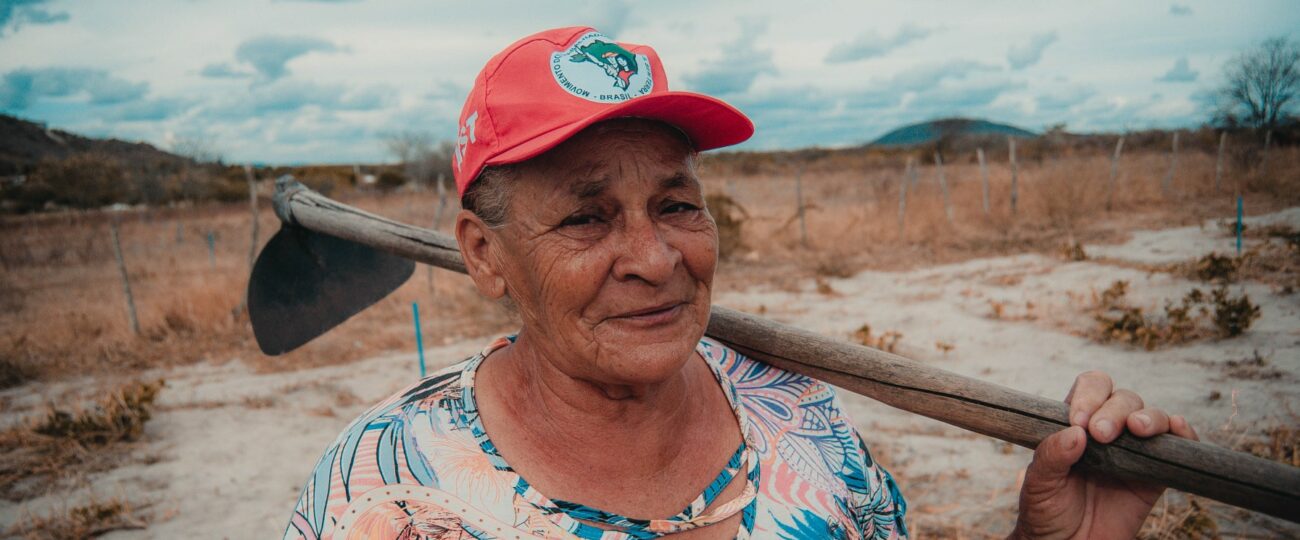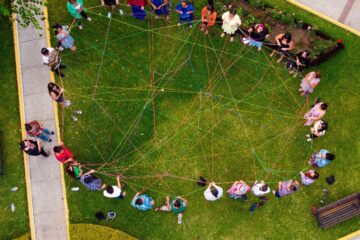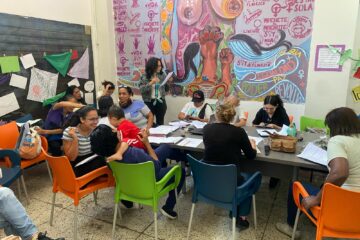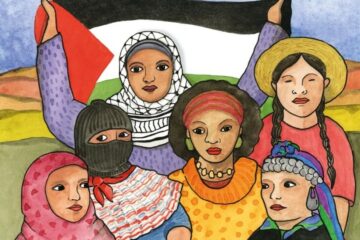To change society
The way we want
Taking part and not being afraid to be a woman!
(Grassroots feminist song)
Amid the political climate of resistance and social change across Latin America in the 1970s and 1980s, several working class political instruments were established in Brazil, including the Landless Workers’ Movement (Movimento dos Trabalhadores Rurais Sem Terra—MST). As it is impossible to look at this revolutionary resistance without looking at women’s relevant participation in different fronts of struggle, it is also impossible to think about the 40 years of the MST without considering this participation as something that is built across different spaces, from occupations to the organization of encampments and settlements, to political education, and the different levels of its structure.
To think about the MST’s organizational process is to think about the meaning of women’s protagonism and how they have managed to wield influence from the materiality of the reproduction of life. As Djacira Araújo wrote in Landless Women Breaking Fences and Making History: 40 Years of the MST, “since the beginning of land occupations, women and children have been there, making an impact, in the sense of raising society’s awareness of the problem of exclusion and displacement of landless families, while also pressuring the governemnt to act in face of the huge violence that could be perpetrated by big farmers.”
While everyday life in the encampments is lively and hopeful, it is also precarious and requires more care work—work that has been historically assigned to women. Everyone needs to be fed, children must be cared for and educated, people who are sick need care, the resistance must be energized. These everyday demands regarding the care for life shape the organization of sectors and allow the establishment of groups and collectives, which become spaces for dialogue, for sharing everyday life, private life, the absense and presence of different kinds of violence, the importance of being together.
Along with this struggle, there is intense domestic and productive work being done, through pain and hope, as well as love and the front-line task in which women use their bodies as a tool to avert conflicts. Still, meetings and other decision-making spaces are places few women can take part in. Over the course of history, it has been a great challenge for women to speak up and take part in politics. Pants and oversized shirts were not always their first clothing choice, but some kind of necessary password so they could be heard and respected as militants, and not harassed and desired as sex objects. This way, women have built their way into the movement’s educational and decision-making spaces. As we explained in the educational brochure The Gender Conspiracy, “the process of including women in leadership tasks within the organization, as well as acknowledging them as political subjects in the struggle for land and agrarian reform, was not easy at all, and required a lot of persistence and collaboration from our sisters.”
While women were working internally, they were also building coordination efforts with women from other rural and urban working class organizations, like the Rural Women’s National Platform, developing different struggles for expanding pension rights, public health care, a new grassroots project for agriculture, agrarian reform, a documentation campaign, and others. They have also built feminist political and ideological education efforts for different levels of militant work and grassroots work.
In the 2000s, as a result of these building efforts, the Gender Sector was established, which, importantly, engaged the whole movement in the discussion about human relationships, addressing the role of patriarchal violence in the continuation of big land properties and the challenge of building new gender relationships, as they are connected to power relationships. This building efforts brought about the collective discussion about women’s financial autonomy, fighting domestic violence, child care. These are very important conversations and eventually they led to the achievement of gender parity in different MST levels in 2006. Their effective participation in national and state levels expanded the political horizon for women’s participation in the movement.
The 2000s also marked the resumption of the meaning of the March 8 struggle, International Day of Women’s Struggle, as working women’s resistance building efforts, understanding the connection between class domination and patriarchal domination. As Djacira explains, “the awareness gained in the experiences of the organization leads Landless Women to feel that they are part of a broader project that involves the working class and that is yet to become real; to realize that things considered ‘small’ are part of a broader struggle against capital.”
By building this and taking part in the agenda of struggles, especially March, they understood how important female self-organizing is. More especially in 2006, women came together in the struggle against the green deserts of eucalyptus monoculture owned by Aracruz Celulose and promoted feminism as a concrete practice to tackle capital, and popular peasant feminism as a strategy for building new subjectivities and sociabilities from an international perspective.
As an organization that is the result of historical experiences of peoples who resist, very early on, the MST started to build international solidarity. This happened both through the instruments for the peasant struggle—including the establishment of the Latin American Coordination of Peasant Organizations (CLOC) and La Via Campesina—and by organizing education, exchange of experiences, and solidarity brigades. The experience in internationalist processes has contributed to the understanding of the organic relationship between capital, patriarchy, and racism, which is profound and internationalized. International organizing is also necessary to face and denounce the maladies of this system against rural peoples.
With the accumulated wisdom from peasant women, Indigenous women, women from water and forest communities regarding the discussion on popular peasant feminism, we also move forward in our understanding of the specific characteristics of this impact for women in the inter-relationship between body-territory. Popular peasant feminism expands our political strategy, as we address equal relationships and human emancipation processes. Moreover, we believe in agroecology for production that is in balance with nature and for rebuilding our humanity. With this political pledge, resuming the commons and defending common goods is key, aiming to build territories that are free from violence in its broad sense.
Women’s struggle for the right to political participation has helped shape the MST, as Djacira argues that “the MST’s organicity is only the way it is due to the female outlook addressing deep topics of human existence, like education, health, child care, the fight against gender-based oppressions, building agroecology, food sovereignty. To a greater extent, these topics have brought the need to rethink the political structure of the organization, underscoring the creation of new collectives, sectors, fronts, and new educational practices.”
Women’s participation has allowed us to understand that it is part of the struggle of the MST and the working class to fight patriarchy, racism, and capitalism in all its political and cultural expressions. This is why it is necessary to be watchful and fight ethical and moral deviations of sexism, racism, fascism, and class-based exploitation—to be watchful in the sense of creating subjectivities guided by humanist, feminist, anti-racist, and socialist principles.

Lucineia Miranda de Freitas is a leader of the MST’s gender sector.




